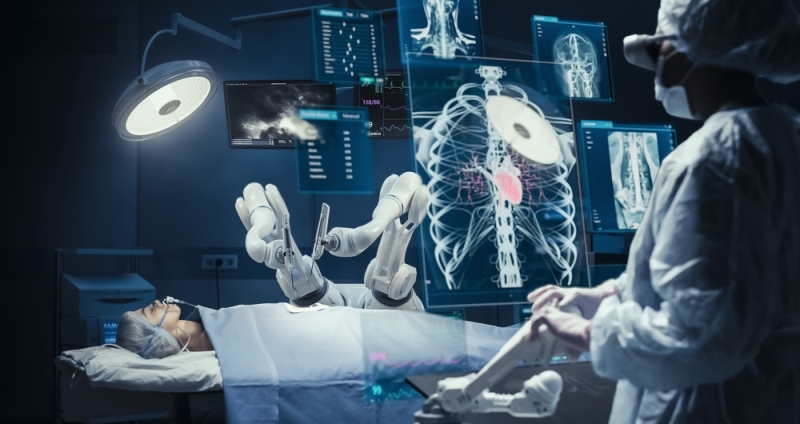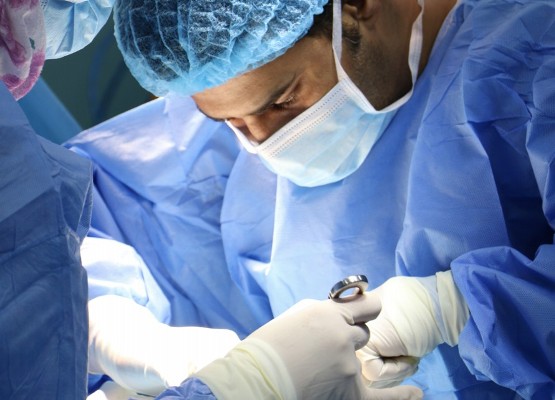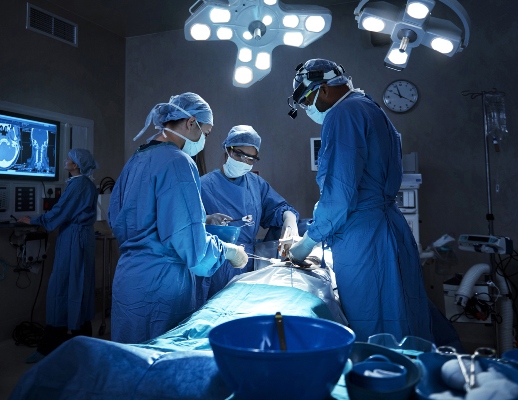
Think about the following questions.
1. Have you ever heard of anyone whose life has been saved by an organ transplant?
2. How do you feel about medical research on primates?
3. Is it right to raise animals to be killed so that humans can live?
VOCABULARY PREVIEW
Match each New Academic Word List(NAWL) word with the correct definition.
- complication
- transmit _____
- transplant _____
- rejection _____
- similarity _____
- immune _____
- a. of or relating to the body's system for fighting disease
- b. in medicine, a response to a transplanted organ in which the organ is attacked by the immune system
- c. the placing of an organ from one person or animal into another
- d. a quality that makes one person or thing like another
- e. to cause something to pass from one thing or person to another
- f. an additional and often unexpected problem
XENOTRANSPLANTATION

Organ1 transplants have saved millions of lives around the world. Over the years, transplants have become much more sophisticated and now have a very high success rate. The problem is that it is difficult to find organs. People can be on waiting lists for years before receiving their much-needed organs, and many die while waiting.
The problem is getting worse, as the demand is increasing while supply is decreasing. The reason for this trend is that the world's population is getting bigger while accidental deaths are falling. Most organ donors are victims of car crashes; they were healthy people with healthy organs who were unfortunately killed. As safety standards and traffic law enforcement improve, fewer people are dying in car crashes. This is, of course, a positive development, except that it decreases the number of healthy organs available to those who need them. So the medical community is now looking to the animal kingdom.
To date, however, no doctor has successfully performed an animal-to-human organ transplant, known as xenotransplantation. The first major obstacle2 is the possibility that the human's immune system will reject the organ. The human immune system is programmed to reject and attack foreign bodies in order to keep the body healthy. Rejection was a problem in the early days of human-to-human organ transplants as well. But over the years, anti-rejection medicines have been developed with great success. Yet, these drugs will probably not work by themselves when the organ of a different species is introduced, so further measures need to be taken. Genetic modification of the organ seems to be one way 20 to reduce the risk of complications.
For example, pigs, which make good donor candidates for xenotransplantation, have a protein called alpha-gal in their tissue3. Normally this protein causes rejection in humans and in our primate relatives, monkeys and apes. But it can be modified to do the opposite: trick the human immune system into recognizing the tissue as human. The procedure has shown success in pig-to-monkey transplants, which makes it promising for humans. After altering the gene, scientists could then clone the pigs and eventually breed4 them conventionally. Pigs breed quickly and have large litters5, so a large supply of organs ready for transplants could be produced this way.
One concern is the possibility that the donor organ could contain viruses dangerous to humans. Anti-rejection drugs, which would have to be used post-operation to ensure that the body continues to accept the new organ, weaken the immune system. This makes the person more likely to get an infection. Pigs' DNA, for example, contains a virus that is harmless to pigs but could prove fatal to humans. Fortunately, scientists have identified a type of pig that does not carry this virus as part of its DNA. Scientists are also working on ways to prevent the virus from replicating6 by identifying the receptors7 that allow the virus to enter a cell.
Another animal that seems likely to be a donor candidate for xenotransplantation is the baboon8, which shares many genetic similarities with humans. This decreases the likelihood of rejection. The main problem with baboon organs is that they can transmit many viruses. In fact, baboon-to-human transplants have been attempted, but the patients died of viral infections rather than organ rejection. Furthermore, unlike pigs, baboons reproduce slowly, so it would be difficult to breed the numbers of baboons that would be necessary to meet the demand for organ transplants.
An advantage of using pigs for transplantation is that to many people, it does not seem as morally problematic as the use of primates like baboons. Of course, some animal activists will argue that it is always wrong to kill an animal for the benefit of humans. But given that pigs are already raised for meat, the idea of using them to save human lives would not present a new ethical issue.
New Academic Word List
- organ 1 : n. a part of the body (such as the heart) that has a particular function
- obstacle 2 : n. something that makes it difficult to do something
- tissue 3 : n. the material that forms the parts in a plant or animal
- breed 4 : v. to cause to mate in order to produce offspring
- litter 5 : n. a group of offspring born at the same time
- replicate 6 : v. to multiply
- receptor 7 : n. part of the surface of a cell which allows molecules to enter
- baboon 8 : n. a large monkey that lives mostly in Africa and parts of the Middle East
READING COMPREHENSION
A ‣ Mark each statement as true (T) or false (F) according to the reading.
- The decrease in accidents has reduced the supply of organs.
- True
- False
- Most organ donors are people who died from heart attacks.
- True
- False
- There have been several successful xenotransplantations.
- True
- False
- Monkey organs have been transplanted to pigs to test immune responses.
- True
- False
- Most pigs carry a virus in their DNA that can kill humans.
- True
- False
B ‣ Choose the best answer according to the reading.
- What is the reading mainly about?
- a. The history of ethical opposition to human-to-animal organ transplantation
- b. Reasons why organs are becoming scarcer while xenotransplantation improves
- c. The current status and future possibilities of animal-to-human organ transplants
- d. Reasons why pigs are the most likely source of organs for future xenotransplantation
- The word it in paragraph 4 refers to _____.
- a. protein
- b. tissue
- c. rejection
- d. primate
- Which is NOT an obstacle to using baboon organs?
- a. Baboons reproduce slowly.
- b. The organs are rarely rejected.
- c. The organs carry many viruses.
- d. It might be morally problematic.
- We can guess from paragraph 7 that _____.
- a. most people think using pigs for organ transplants is unrealistic
- b. the pig is the one animal everyone can agree is nothing like us
- c. more and more people are opposed to raising pigs for meat
- d. some animal activists would oppose using pigs' organs
C ‣ Look for the answers in the reading and write them on the lines.
- What makes pigs good donor candidates for xenotransplantation?
_____ - Why is it an advantage that baboons and humans are genetically similar?
_____
SUMMARY
Fill in the blanks with the phrases in the box.
- genetic modification
- more sophisticated
- reproduce quickly
- to humans
- fewer accidental deaths
- ethical concerns
Organ transplants have become 1 _____ as technology has improved. But there is still a shortage of organs, mostly because there are now 2 _____. Doctors have not yet been successful with xenotransplantation, but believe 3 _____ of organs may help. Pigs are promising donor candidates because they can 4 _____, although viruses in their DNA remain a concern. Baboons are also candidates because they are closely related 5 _____. However, the use of pigs would present fewer 6 _____.
VOCABULARY PRACTICE
Fill in the blanks with the words in the box. Change the form if necessary.
- complication
- immune
- rejection
- similarity
- transmit
- transplant
- Mosquitoes in many parts of Africa _____ malaria.
- His _____ system must be really strong; he hardly ever gets sick.
- The French, Italian, and Spanish languages have many _____ because they are all descendants of Latin.
- Doctors performed the first successful heart _____ in 1967.
- Receiving an organ transplant from a close relative reduces the risk of _____ .
- There is always a chance of _____ with any surgery.
SUPPLEMENTAL READING
Building Organs from Stem Cells

Stem cells are cells that can replicate themselves in a variety of specific forms. In newly fertilized eggs, they create the different types of tissue that make up the human body. These include the organs, bones, muscles, and skin. Embryonic stem cells are taken from embryos-humans in the earliest stages of development before birth. These stem cells develop into various tissues. But adult stem cells help repair tissues once the body has been formed.
Stem-cell research promises hope to thousands of people in failing health. Stem cells could be used to create therapies for people with serious diseases and debilitating injuries. But despite the potential health benefits, stem-cell research is a hotly debated topic.
Embryonic stem cells seem to hold the most potential for therapy. But to use embryonic stem cells, the embryo has to be destroyed. Some believe that it is wrong to intentionally destroy a human embryo. They consider it to be a living person. Proponents of stem-cell research, however, say that these embryos are being destroyed anyway. Most embryos for research come from those used in in-vitro fertilization. This often produces extra embryos that are destroyed or frozen indefinitely, but never used.
The main argument in favor of stem-cell research is its potential for producing life-saving therapies. Proponents assert that the lives that could be saved outweigh the value of the embryos that would be destroyed. But opponents counter that adult stem cells should be sufficient for creating therapies. To resolve this conflict, some researchers have proposed obtaining stem cells from embryos without destroying the embryos, a technique that is being studied. Scientists have also genetically altered regular adult cells to make them work like stem cells—but this method will require a great deal of further testing to establish its safety.
Fill in the blanks with information from the reading.
- Embryonic stem cells can grow to become _____ , whereas adult stem cells primarily repair tissues.
- Some people are against using embryonic stem cells because they believe a human embryo is a(n) _____ .
- Researchers are trying to extract embryonic stem cells without _____ .

Leave a comment
Load more